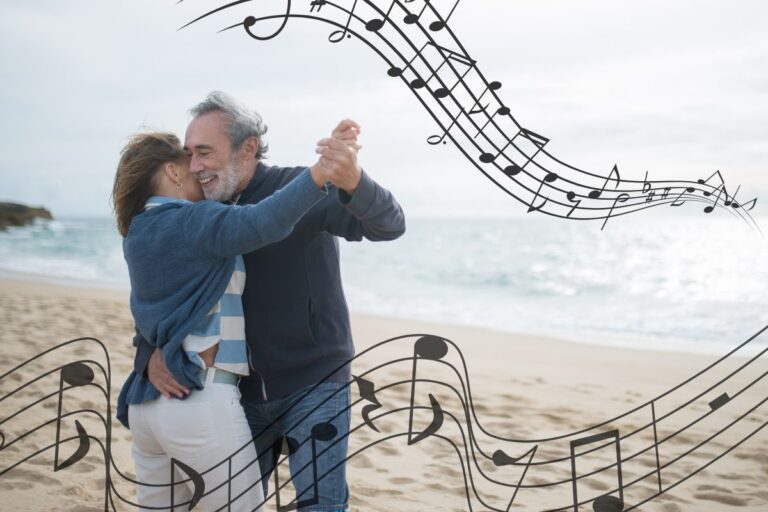Let’s be honest—most of us know we should exercise more, but the thought of another treadmill session or lifting weights can feel uninspiring. What if the best workout for your brain wasn’t at the gym but on the dance floor? Emerging research suggests that dancing may not only be a fun alternative to traditional exercise but could also offer superior cognitive benefits, particularly as we age.
The Science Behind Dance and Brain Health
A randomized controlled trial published in Frontiers in Aging Neuroscience explored the cognitive effects of social dancing compared to walking in older adults. The study, known as the Dancing Mind Randomized Controlled Trial, involved 115 participants aged around 70. Over eight months, one group engaged in ballroom dance classes twice a week, while the other followed a walking program.
While both activities yielded some benefits, the dance group showed greater improvement in visuospatial memory—the cognitive ability that helps with navigation and recalling spatial patterns. Researchers believe this advantage comes from the unique challenges dance presents: learning and remembering complex steps, synchronizing movements with music, and adapting to changing sequences—all of which give the brain an intense workout.
“Dance improved one of the cognitive domains (spatial memory) important for learning dance.” — Merom et al., 2016 (frontiersin.org)
More Than Just Physical Exercise
What makes dance stand out from other forms of exercise? Unlike repetitive workouts, dance engages multiple brain functions simultaneously:
- Memory & Learning: Recalling steps strengthens procedural and working memory.
- Coordination: Synchronizing movement with rhythm enhances motor control.
- Social Cognition: Partner dancing fosters social interaction, which is linked to better cognitive health.
- Creativity & Expression: Dance integrates emotion and movement, stimulating different areas of the brain.
- Cognitive Flexibility: Constantly learning new choreography challenges the brain to adapt and process information quickly.
A large-scale systematic review and meta-analysis published in Sports Medicine found that structured dance programs lasting at least six weeks significantly improved psychological well-being, motivation, and cognitive function across all age groups (7-85 years). The study suggested that dance may be as effective as—if not superior to—traditional physical activities like walking, weight training, or team sports for improving memory, emotional health, and social engagement.
“Preliminary evidence suggests that dance may be better than other physical activities to improve psychological wellbeing and cognitive capacity.” — Dr. Alycia Fong Yan, University of Sydney (sydney.edu.au)
The Anti-Aging Effects of Dance on the Brain
One of the most compelling studies on dance and brain health comes from researchers at the German Center for Neurodegenerative Diseases and Otto von Guericke University Magdeburg. Over 18 months, seniors participated in either dance classes or traditional endurance and flexibility training.
Both groups experienced growth in the hippocampus, the brain region associated with memory and spatial navigation. However, only the dancers showed increased volume in the left dentate gyrus and right subiculum—key areas for memory and balance.
“It was only dancing that led to noticeable behavioral changes in terms of improved balance.” — Dr. Kathrin Rehfeld, lead researcher (frontiersin.org)
These findings highlight how dance’s cognitive complexity—with its ever-changing patterns, steps, and rhythms—may offer unique neuroprotective effects against aging-related cognitive decline.
Not Just for Seniors
The benefits of dance extend beyond older adults. Studies have shown that dance improves cognitive function across the lifespan, including children, young adults, and individuals with chronic conditions like Parkinson’s disease, heart failure, and fibromyalgia.
A 2024 review found that dance interventions significantly improved:
- Emotional well-being
- Depression symptoms
- Motivation levels
- Memory and cognitive function
- Social interaction skills
Stay Active to Stay Fit!
Incorporating more movement into daily life is key for longevity. Even simply walking for fat loss, at low-intensity contributes to calorie burn over time. Simple changes, such as standing more often or taking short walks, can help increase your NEAT (Non-Exercise Activity Thermogenesis), which plays a crucial role in weight management and better brain health.
Regular movement also supports mental health by reducing stress and enhancing cognitive function. That’s right. Exercise can improve your mood! For those struggling with consistency, identifying ways to stay motivated to exercise—such as setting achievable goals, tracking progress, or finding enjoyable activities—can help maintain long-term habits.
Additionally, for aging adults, fitness for men over 40 is crucial for maintaining muscle mass, joint health, and overall well-being. While dancing is great for brain and heart health, strength training and moderate-intensity activities can improve longevity and resilience too. Physical activity an essential part of a healthy lifestyle at any age!
Even just 5 minutes of daily movement could help ward off dementia by engaging the brain and keeping it stimulated. Short bursts of activity, like a quick dance session, can have significant long-term benefits for cognitive health.
For those looking to improve their overall fitness, dance can be a great way to lose 10 pounds (the right way). It combines cardio and strength-building elements in a fun, engaging manner, making weight loss more sustainable.
If you’ve taken a break from working out, dance offers a gentle and enjoyable way to start exercising again. It’s easy to modify, making it accessible for all fitness levels while providing a full-body workout.
And if you prefer to stay in, you can get fit at home by following guided dance workouts. Many online platforms offer tutorials that make it easy to learn and stay active without needing gym equipment.
Finding Your Rhythm
The best part? There’s no right type of dance to reap these benefits. From ballroom and salsa to aerobic dance and cultural folk styles, the key is structured learning in a supportive environment.
If you’ve ever thought about trying a dance class, this might be your sign. Unlike many workout routines that feel repetitive, dance keeps things fresh—helping you stay engaged long-term.
The Bottom Line
While all physical activity is beneficial, dance offers a unique combination of movement, creativity, memory training, and social connection, making it one of the most powerful exercises for brain health. By challenging both the body and mind, dance can help improve memory, boost cognitive flexibility, and even slow brain aging.
So the next time you’re choosing between the treadmill and the dance floor, remember: your brain might thank you more for choosing to dance.
References
- Merom, D., Grunseit, A., Eramudugolla, R., Jefferis, B., McNeill, J., & Anstey, K. J. (2016). Cognitive Benefits of Social Dancing and Walking in Old Age: The Dancing Mind Randomized Controlled Trial. Frontiers in Aging Neuroscience, 8, 26.
- Rehfeld, K., Müller, P., Aye, N., et al. (2017). Dancing or Fitness Sport? The Effects of Two Training Programs on Hippocampal Plasticity and Balance Abilities in Healthy Seniors. Frontiers in Human Neuroscience, 11, 305.
- Fong Yan, A., et al. (2024). Effects of Dance on Psychological and Cognitive Outcomes Compared to Other Physical Activity Interventions: A Systematic Review and Meta-Analysis. Sports Medicine.
Better Living uses affiliate links. If you make a purchase through them, we may receive a small commission (for which we are deeply grateful) at no cost to you.



